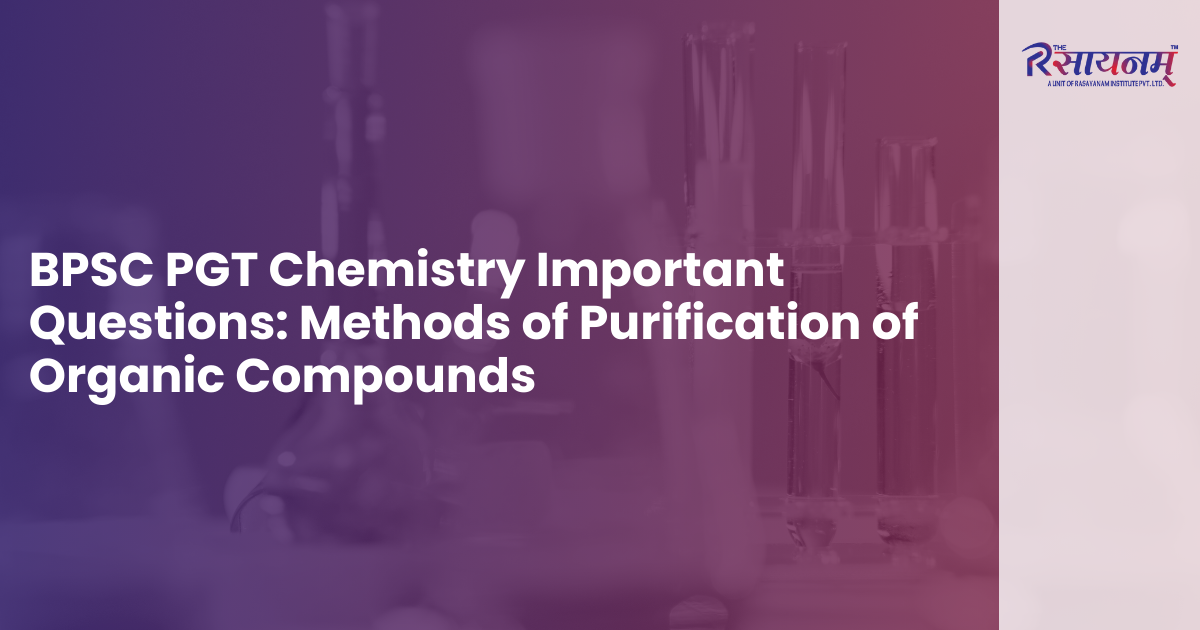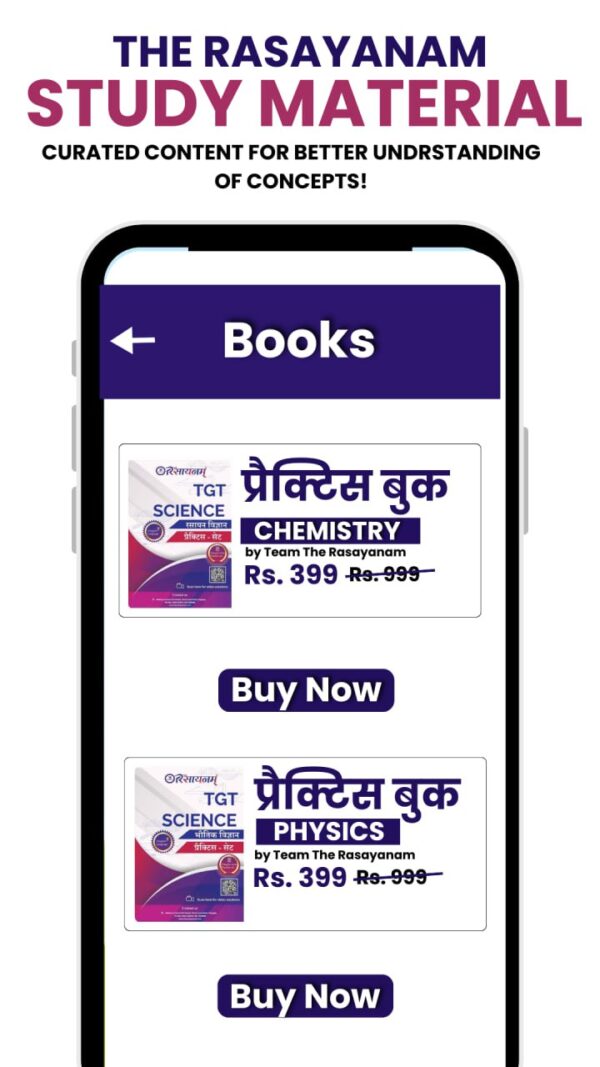
1. In fractional distillation, vapors of the low-boiling-point component ascend to the top of the column.
a) True
b) False
Answer: a
Explanation: Fractional distillation, similar to simple distillation, works on the principle of differences in boiling points of liquids. However, it is specifically used when the boiling point differences between the liquids are small. In this process, the higher boiling point liquids condense near the bottom of the distillation column, while the lower boiling point liquids rise and condense toward the top.
2. Gas chromatography can be performed in X, whereas liquid chromatography can be performed in Y. Identify X and Y.
a) X = only plane surfaces, Y = only columns
b) X = only columns, Y = only plane surfaces
c) X = only columns, Y = columns or plane surfaces
d) X = columns or plane surfaces, Y = only plane surfaces
Answer: c
Explanation: Gas chromatography is performed only in columns, as the sample is vaporized and injected at the top of the chromatographic column. Depending on the stationary phase, it may be gas–liquid or gas–solid chromatography. In contrast, liquid chromatography uses a liquid mobile phase in which the sample molecules or ions are dissolved, and it can be carried out either in a column or on a plane.
3. Thin-layer chromatography is used to estimate drugs in a formulation.
a) True
b) False
Answer: b
Explanation: Column chromatography is used for the estimation of drugs in formulations. Thin-layer chromatography (TLC), on the other hand, is employed to detect amino acids by spraying the plate with ninhydrin solution. In TLC, a glass plate known as a chromatoplate is used as the stationary support.
4. What is the basis for the process of distillation?
a) Difference in melting point
b) Difference in temperature
c) Difference in pressure
d) Difference in boiling point
Answer: d
Explanation: Distillation works on the principle of differences in boiling points of liquids, as each liquid vaporizes at its own characteristic temperature. The vapors are then cooled and collected separately as liquids. Crystallization, on the other hand, is used to separate volatile liquids from non-volatile substances.
5. The purification method where solid substances change from solid to vapor state without passing through the liquid state is called as which of the following?
a) Sublimation
b) Crystallization
c) Distillation
d) Differential extraction
Answer: a
Explanation: In sublimation, a solid directly changes into the vapor state without passing through the liquid phase. This method is useful for separating sublimable compounds from non-sublimable ones. In contrast, crystallization, distillation, and differential extraction require a suitable solvent and are mainly applied to liquids rather than solids alone.
6. In crystallization, the compound dissolved in a solvent is more soluble in what temperature?
a) Room temperature
b) Lower temperature
c) Higher temperature
d) Very low temperature
Answer: c
Explanation: The solubility of a compound in water generally increases with temperature. As the temperature rises, the kinetic energy of solvent molecules also increases, enabling them to break the intermolecular forces holding the solute molecules together more effectively. Since these interactions require significant energy to overcome, higher temperatures enhance solubility.
7. Identify an example of compounds separated by the steam distillation method.
a) Glycerol-spent lye mixture in the soap industry
b) Aniline-water mixture
c) Chloroform and aniline mixture
d) Different fractions of crude oil in the petroleum industry
Answer: b
Explanation: Aniline is separated from its mixture with water using steam distillation, as this method is suitable for substances that are steam-volatile and immiscible in water—both conditions met by aniline. In comparison, glycerol–spent lye mixtures are separated by distillation under reduced pressure, chloroform–aniline mixtures by simple distillation, and crude oil by fractional distillation.
8. Which is not used as an absorbent in adsorption chromatography?
a) Silica gel
b) Alumina
c) Potassium permanganate
d) Starch
Answer: c
Explanation: A good adsorbent should have a large surface area, be inexpensive, readily available, thermally stable, and possess high abrasion resistance. Materials like silica, alumina, and starch meet these criteria, whereas potassium permanganate does not, making it unsuitable as an adsorbent.
9. Which of the following is the apparatus for differential extraction?
a) Separatory funnel
b) Porous sheet
c) Packed column
d) Electric motor
Answer: a
Explanation: A separatory funnel is used in differential extraction, which separates an immiscible organic compound from an aqueous solvent. The funnel allows clear layer formation, with the denser solvent settling at the bottom and the lighter one on top. This property makes the separatory funnel the ideal apparatus for the process.
10. In column chromatography, identify the mobile and stationary phases from the following.
a) Solid, Liquid
b) Liquid, Solid
c) Gas, Liquid
d) Solid, Solid
Answer: b
Explanation: In column chromatography, the mobile phase is a liquid or a mixture of liquids that flows down the column, while the stationary phase is a solid adsorbent, such as alumina or silica gel, over which the mobile phase passes.
11. Paper chromatography is a type of chromatography.
a) Column chromatography
b) Thin-layer chromatography
c) Adsorption chromatography
d) Partition chromatography
Answer: d
Explanation: Paper chromatography is a form of partition chromatography because the solutes spend more time in the stationary phase than in the mobile phase, causing them to move slowly up the paper. Partition chromatography separates substances based on their distribution between two liquid phases.
12. Which is the most suitable carrier gas in gas chromatography?
a) Helium
b) Nitrogen
c) Oxygen
d) Carbon dioxide
Answer: a
Explanation: In gas chromatography, the carrier gas must be inert so it does not react with the sample. While gases like nitrogen are also used, helium serves as the carrier gas in about 90% of instruments. Hydrogen is sometimes preferred as it provides better separation efficiency.
13. What is the paper strip developed in partition chromatography called?
a) Chromatograph
b) Chroma
c) Chromatographing strip
d) Chromatogram
Answer: d
Explanation: A paper strip that separates and retains different components based on their partition between two phases is called a chromatogram. The separated colored components appear as spots at varying distances from the initial application point.
14. Which type of chromatography involves the separation of a mixture over a column of adsorbent packed in a glass tube?
a) Thin-layer chromatography
b) Partition chromatography
c) Column chromatography
d) Gas liquid chromatography
Answer: c
Explanation: Column chromatography separates a mixture using a column packed with a solid adsorbent inside a glass tube. The mixture is applied at the top, and the mobile phase is then allowed to pass slowly through the column, enabling separation of the components.
15. The mobile phase in chromatography can comprise of which of the following?
a) Gas or liquid
b) Liquid or solid
c) Solid or gas
d) Liquid only
Answer: a
Explanation: In chromatography, the mobile phase flows over the stationary phase within the packed bed or column. Since only fluids (liquids or gases) can flow, they serve as the mobile phase. Solids cannot be used because they lack fluidity and would hinder proper interaction with the stationary phase.
Related Question Bank to Read:
BPSC PGT Chemistry: p-Block Elements Important Questions
BPSC PGT Chemistry Important Question: Uses of Boron and Aluminium and their Compounds
BPSC PGT Chemistry: Trends and Anomalous Properties of Boron Important Questions
BPSC PGT Chemistry: p-Block Elements Important Questions
Silicon & P-Block Elements: Understanding Their Properties and Applications
Boric Acid & P-Block Element: Understanding Their Properties and Applications
BPSC PGT Chemistry: Important Compounds of Boron
 Download The Rasayanam App
Download The Rasayanam App

Also, download our brochure for more details on the program and contact us with any queries.
Conclusion
If you’re preparing for BPSC PGT Chemistry, The Rasayanam provides structured courses, expert mentorship, and top-quality study resources to help you excel.


